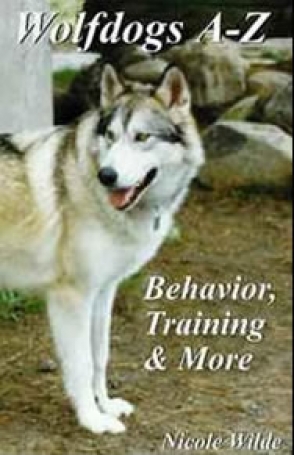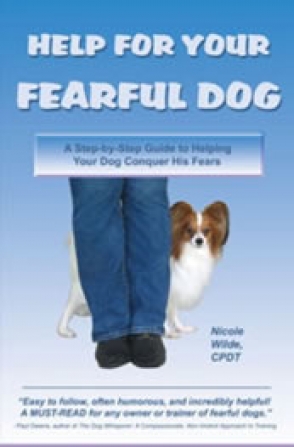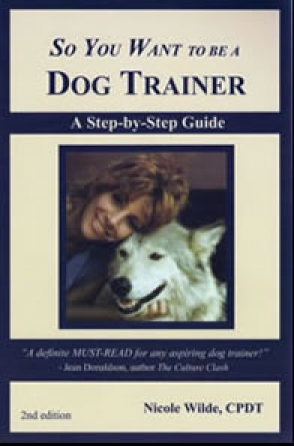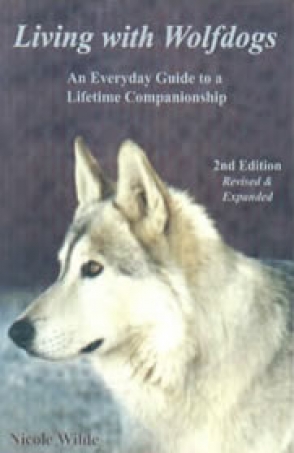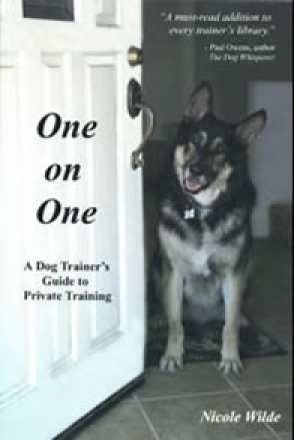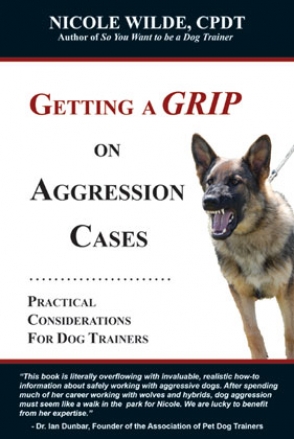Nicole Wilde has worked with wolfdog (aka wolf hybrid) rescue, education and training for over fifteen years.
Dog on the Loose! Part Deux
Ironically, this morning, just days after posting my blog about what to do in an emergency “dog on the loose” situation, I encountered one. On my way to see a new dog training client, just around the corner from the woman’s home, a Viszla ran across the road in front of my Jeep. I saw the dog in plenty of time not to hit her, but I kept an eye on her as she ran onto a nearby lawn and began to sniff the grass. She was wearing a bright blue collar with ID tags. With a sigh of acknowledgment that I was surely going to be late for my appointment, I pulled over, figuring I could at least phone the owner and hold on to the dog until the owner could claim her.
As I got out of the Jeep, the dog bolted away from me and darted down the sidewalk. I heard a voice half a block behind me yelling, “Millie! Come!” I yelled, “Is that your dog?” to which the teenage girl answered, “Yes!” She ran down the block after the dog, leash in hand. The dog was, of course, much faster, and was unfortunately headed toward a wide, busy intersection. Holding my breath while simultaneously saying a silent prayer that the dog would not be hit, I watched her streak across the road. Once safely on the other side, she continued to run. I motioned to the girl jump into my Jeep so we could chase her dog down together.
On the next block, a woman had pulled over after almost hitting the dog. I convinced her to help us in the chase (and it took some quick convincing—she also had somewhere to be). After fifteen minutes of pulling over at strategic points and trying to corral the dog, we ended up with a standoff. The dog was on a street corner. The woman in the other car had gotten out and was standing so as to block the dog on one side. A neighbor had joined the chase and was attempting to block the other side. The girl filled in one gap, and I formed the fourth corner of a makeshift ten-foot square around the dog.
Millie was obviously distressed, looking from one person to the other, obviously trying to gauge where her best chance of a quick escape might be. Instead of advancing on her, I crouched down, opened my arms wide, and said very calmly, “It’s okay, Millie. Come here, that’s a good dog.” Apparently the gods of canine communication were smiling down on me, because Millie walked right into my arms. The girl was then able to leash her.
Thankfully, this story had a happy ending. But it made me realize that in my previous blog about loose dog emergency measures, I neglected to address how to get the dog all the way to you so that you can actual grab her.
Ironically, most of us do the exact opposite of what will have the desired effect: we face dogs directly, lean forward, and make waving motions. All of this looks confrontational from the dog’s point of view, and probably scary as well. The best course is to face away from the dog, crouch slightly, and pat your thigh while calling the dog to you in a high, happy voice. Use at least a few syllables, like repeating your dog’s name. If you try it right now with your own dog, I bet he or she will come running, even if you haven’t trained a formal recall yet. It’s the high pitched, repetitive sounds that draw the dog, as well as the non-confrontational body language. The open-armed approach can work as well—in Millie’s case, she perceived me as a safe harbor in an otherwise stressful situation.
Happy training, and here’s to dogs staying safely in homes and behind gates—I don’t want to be writing a third installment anytime soon!

